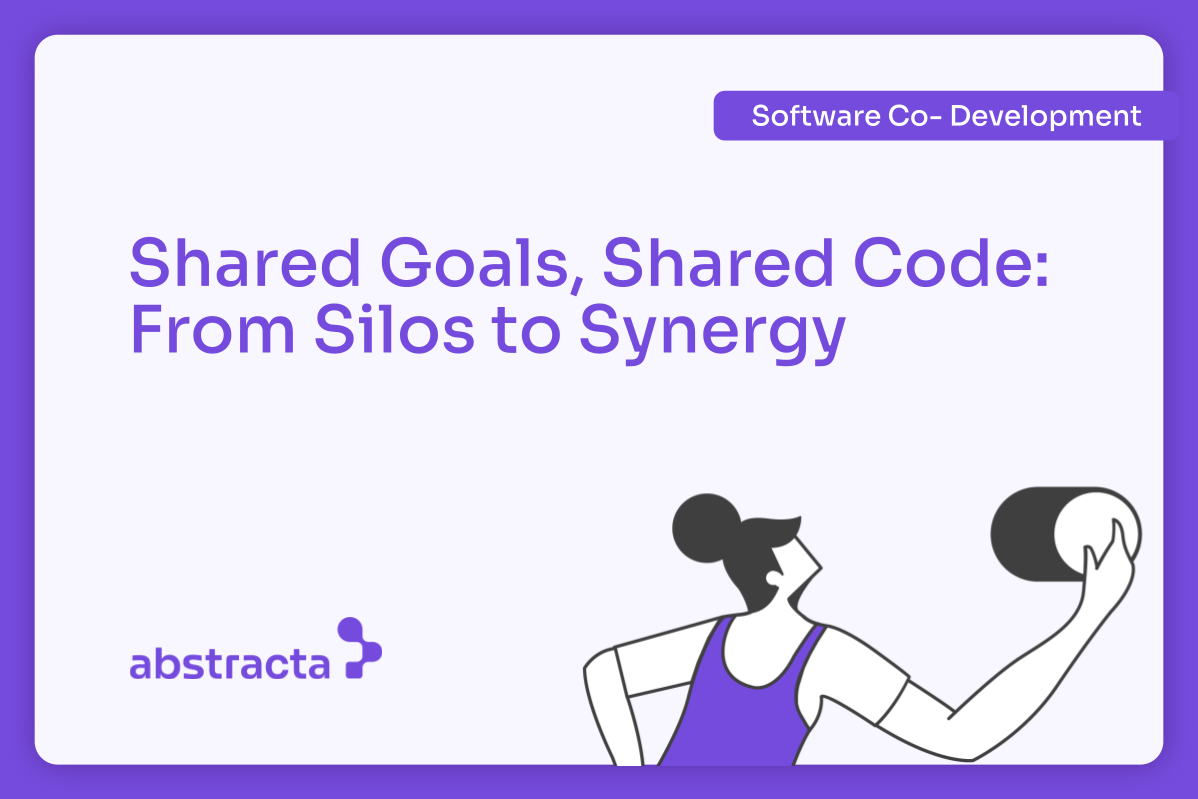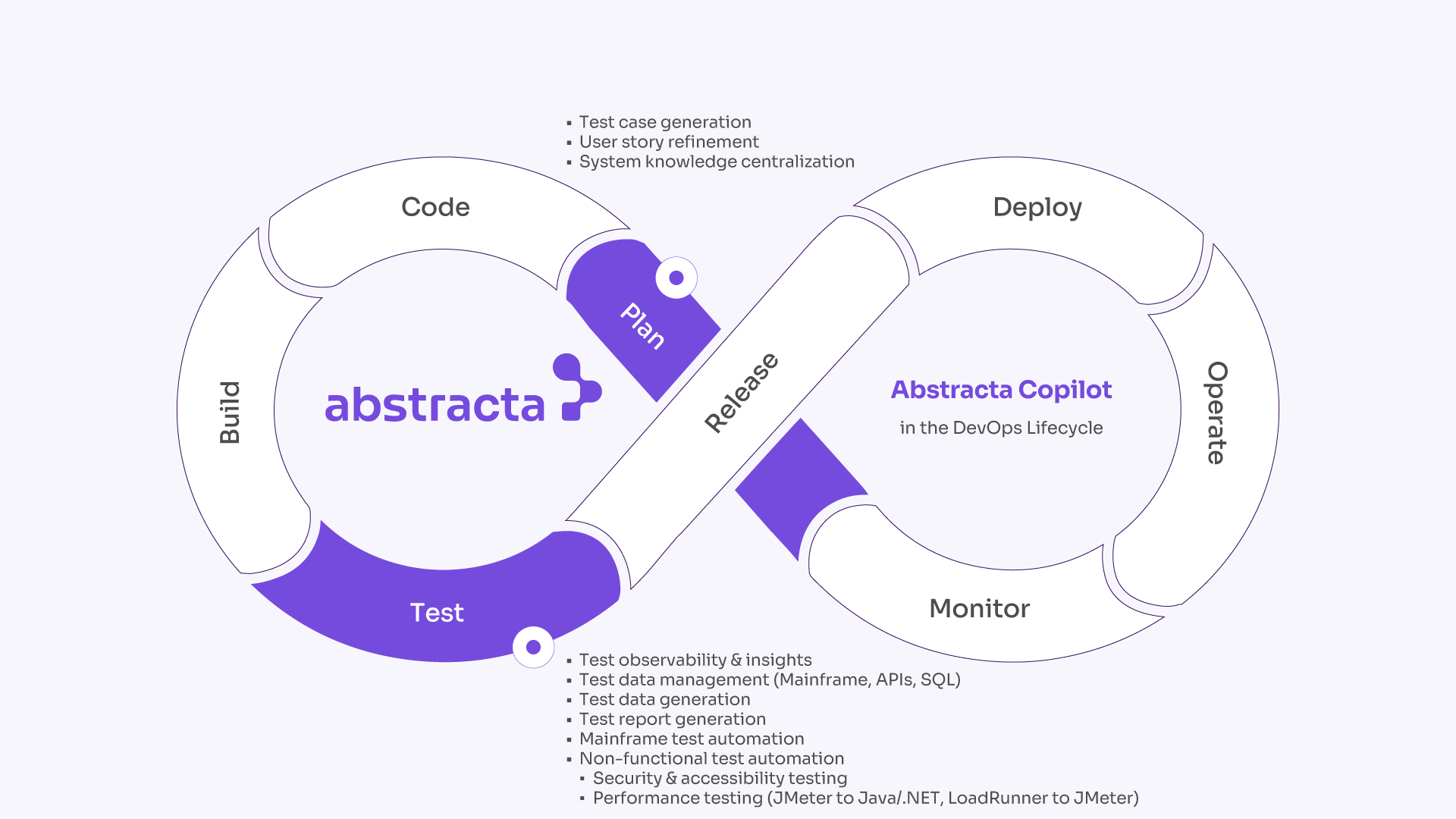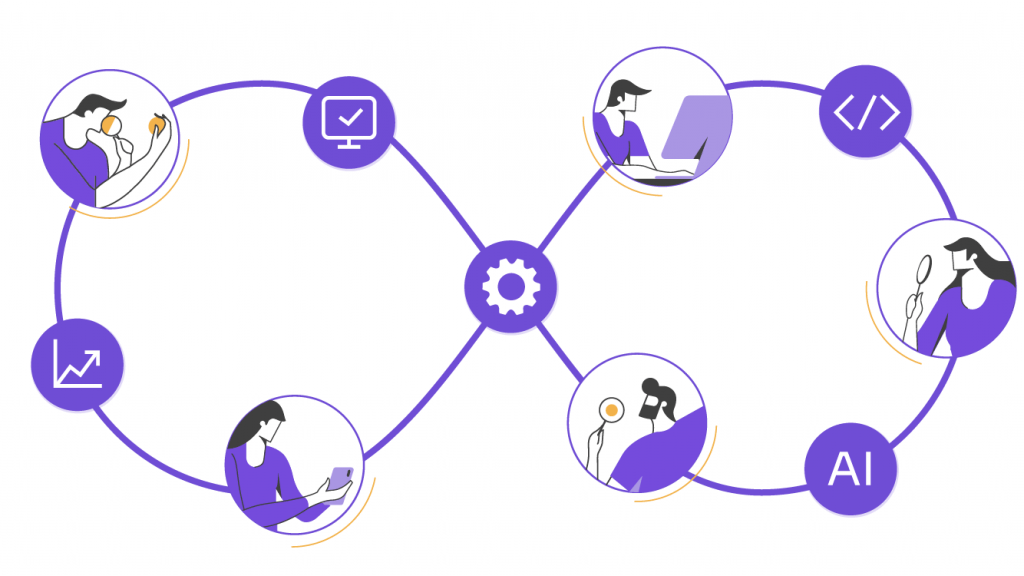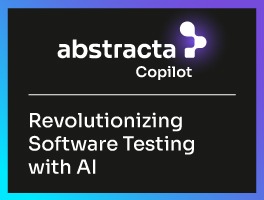Abstracta turns silos into synergy. With co-development software powered by AI agents and strong partnerships, teams deliver faster software and measurable business outcomes.


What if you could build better software not by working harder, but by working together—across time zones, roles, companies, and even with AI collaborators? That’s the promise of co-development software.
As software systems become more complex, more organizations are turning to collaborative approaches. This is because delivering a high-impact software product and smarter outcomes requires shared ownership, fluid collaboration, adaptable tools, and the right partners by your side.
Such a shift is transforming the software development process, enabling faster delivery, stronger alignment, and deeper innovation. At the core of this evolution is the use of co-development tools that support both human teams and AI agents.
In this guide, we address a terminology gap: many search for co-development software, yet the broader impact comes from software co-development as both tools and practice.
Looking for a custom software development partner?
Let’s discuss how co-development can reduce delivery risk in your next enterprise project
Contact us to meet your project objectives with our co-development approach.
What Is Co-Development Software?


Co-development software refers to platforms that enable internal and external development teams to collaborate in real time on the same codebase, infrastructure, or digital product. These tools are essential in modern software development projects, where alignment across teams is critical.
Unlike siloed workflows common in traditional software development, co-development encourages simultaneous contribution, transparency, and shared development responsibilities. It fosters team synergy across organizations while supporting clear ownership of project goals.
Collaboration tools go beyond classic platforms. They integrate version control systems, task tracking, continuous integration, and communication tools like chat and video conferencing. Many also connect with cloud computing platforms to enhance flexibility. In essence, they provide a foundation for collaborative software creation, helping multiple teams adapt to changing project needs.
Take Test Automation Further with mabl!
Working across teams? With mabl and Abstracta, you get automation that fits your workflow — and a partner that’s already helped dozens of teams do it right.
It’s the test automation layer your co-development process needs to stay fast and reliable.
Book a Meeting
Why the Co-Development Model Works


The co-development model works because it brings people together across functions, companies, and time zones to work toward shared outcomes. It offers the structure and flexibility needed to deliver software products that evolve with business needs.
✔ Aligns teams around shared project goals
Both in-house and external teams contribute equally, reducing misalignment and reinforcing clarity across the development lifecycle.
✔ Enhances collaboration across geographies and roles
Built-in communication tools foster real-time and async exchanges, supporting effective communication throughout the development cycle.
✔ Integrates specialized skills
By involving contributors with diverse technical expertise, teams can incorporate specialized skills on demand—ideal for high-stakes software development projects.
✔ Accelerates delivery through iterative improvements
Using agile methodologies, co-development supports fast iteration, continuous integration, and fast feedback cycles that reduce delays.
You can explore more about software development methodologies here.
✔ Supports dynamic project needs
The model is adaptable to evolving requirements, regulatory shifts, or architecture decisions, common in various industries such as finance, healthcare, or e-commerce.
Working With vs. Without Co-Development: A Side-by-Side Comparison


| Without Co-Development | With Co-Development Software | |
|---|---|---|
| Team structure | Siloed departments or isolated vendors | Unified co-development teams across internal and external collaborators |
| Project goals | Fragmented understanding | Shared ownership of the project’s goals |
| Development responsibilities | Split by phase or function | Collaborative, end-to-end involvement across teams |
| Feedback loops | Slow, usually after full phases | Continuous feedback throughout the development process |
| Tools | Disconnected systems, manual processes | Advanced tools that support CI, version control, and task automation |
| Adaptability | Limited ability to react to change | Fast iterative improvements and real-time course correction |
| Outcome | Rework, delays, missed deadlines | Faster project completion and better-quality software |
Real-Time Observability with Datadog + Abstracta
Enterprise leaders need full visibility to make faster decisions
Abstracta & Datadog professional services help you monitor, secure, and optimize every layer of your cloud infrastructure—without slowing down delivery.
Book a Meeting
Choosing Co-Development Software: Key Factors


When choosing co-development software, consider how well it integrates with your development software, team workflows, and project scale.
Key Questions to Ask:
- Can it support continuous integration and automation?
- Does it align with cloud computing environments?
- Will it allow smooth onboarding of external teams?
- Are the communication tools intuitive and secure?
- Does it enable traceability and governance for quality assurance?
- Do we need tighter integration across our development lifecycle?
- Are our current development tools slowing collaboration between our internal team and external partners?
- Do we have a strategy to facilitate the adoption of new tools?
It’s also important to assess whether you’re equipped to encourage open communication between contributors. Remember, even the best tools fall short if they’re layered on top of a broken process.
Looking for support in this decision? Contact us! Let’s assess your current setup and recommend the best-fit co-development tools.
How Co-Development Works Step by Step


Shifting to co-development means moving from isolated handoffs to shared, fluid processes. Here’s how it works in real-world software projects:
- Define your project’s goals: Anchor your roadmap in both business needs and user requirements.
- Clarify development responsibilities: Define roles across multiple teams, whether internal or external.
- Set up the platforms: Implement co-development software with shared access and automation.
- Establish communication routines: Use structured syncs, dashboards, and informal channels to maintain momentum.
- Operate in short cycles: Embrace the iterative nature of modern work, refining through fast loops.
- Track progress and feedback: Use tools to surface risks, monitor code quality, and drive alignment.
- Adjust as you go: Handle changes with agility and minimal disruption (this is where co-development shines.)
- Extend into maintenance: Keep teams aligned beyond launch through shared ownership of ongoing maintenance.
The Role of AI Agents in Co-Development


At Abstracta, co-development is not a slogan but a practice. We build custom AI agents for each client, adapting to specific tools, industries, and workflows—whether integrating with Jira and Slack or supporting compliance-heavy environments like finance and healthcare.
Co-development is no longer limited to human teams. AI agents are becoming real contributors—accelerating decisions, uncovering risks, streamlining documentation, and enhancing test coverage in real time.
Is your team truly making the most of AI?
It’s high time to scale your development.
Book a meeting
Meet Abstracta Copilot
Abstracta Copilot is our AI-powered assistant designed to support every stage of software quality workflows and redefine collaboration in modern software projects.
It enables teams to interact with complex systems through natural language, bridging technical silos and automating critical testing and quality tasks. Trained on over 1,000 projects and industry-specific data, it speaks the language of testers, developers, and product teams alike.
By embedding it directly into co-development and observability platforms, we unlock continuous feedback loops, smarter automation, and shared understanding across distributed teams.
Key capabilities include:
- Semantic search across technical documentation and project knowledge.
- Natural language interfaces for APIs, SQL, iSeries (AS/400), and mainframe systems.
- Automated generation of user stories, test cases, and technical reports.
- Real-time system understanding and documentation updates.
- Functional and non-functional analysis, from performance to accessibility.
Co-development with Abstracta Copilot means you’re not just scaling headcount—you’re scaling expertise. It allows your team to work faster, align better, and focus on what really matters: delivering high-quality software that evolves with your business.
Abstracta Copilot supports team collaboration, minimizes blockers, and helps development teams meet expectations with fewer surprises and stronger alignment.
Request a personalized demo!
Finding the Right Co-Development Partner


A right co-development partner supports culture change. They help structure your work around shared purpose, enable open communication, and bring a proven track record of execution.
Look for someone who:
- Deeply understands the software development landscape.
- Can integrate with your development team fast.
- Offers guidance through complexity, not just code.
- Supports sustainable, successful delivery, not just speed.
- Has experience across various industries and advanced technologies.
When to Consider Co-Development
If any of these sound familiar, it might be the right time to embrace co-development:
✅You rely on external teams or work across time zones
Co-development platforms unify your contributors—no matter where they are—reducing delays and aligning efforts in real time.
✅Your project requires specialized skills or compliance expertise
Choose smarter outsourcing, powered by proficient teams and collaborative tools. Bring experts into your workflow. Shared tools and responsibilities foster true collaboration and better results.
✅You face frequent changes and need to adapt fast
Co-development supports iterative development and ongoing feedback, making it easier to adjust the course without derailing your project.
✅You want stronger ownership and fewer handoffs
With shared repositories, goals, and dashboards, everyone stays connected to outcomes—not just tasks.
✅You’re scaling and need to move faster without losing quality
Co-development helps you extend your team’s capacity, improve test coverage, and meet deadlines with confidence.
Final Thoughts – The Cultural Shift Behind Co-Development


We’ve talked about tools and processes, but there’s something even more important—mindset. Adopting co-development software requires embracing a more open, connected way of working.
That includes:
- Encouraging collaboration frameworks that value transparency.
- Building trust across teams with shared metrics and key performance indicators.
- Promoting a space where diverse perspectives and domain knowledge are not just accepted but welcomed.
Innovative solutions often emerge from synergy. When people work in silos, energy gets lost. When they work together—with the right tools, trust, and rhythm—the impact multiplies.
Ready to embrace co-development? Reach out to us!
Let’s talk about how we can help you implement it.
FAQs about Co-Development Software


What Is Co-Development Software?
Co-development software is a suite of platforms that supports collaborative software development by enabling multiple teams to contribute in real time to a shared codebase, across roles, locations, and even organizations. It includes tools for version control, testing, communication, and task tracking.
What Are The Three Types of Collaboration Software?
The three main types of collaboration software are:
- Communication tools – Slack, Zoom, Microsoft Teams
- Project management tools – Jira, Trello, Asana
- Content collaboration platforms – GitHub, Confluence, Bitbucket
Note: While these are the classic categories, at Abstracta, we go one step further. We integrate AI agents into co-development workflows—not as a separate type of collaboration software, but as enhancers within these tools. They help teams reduce manual effort, accelerate feedback loops, and keep everyone focused on what really matters. We see them not as collaborators, but as intelligent support systems that make collaboration more powerful.
What Is Co in Development?
When it comes to development, “co” refers to collaborative, meaning that development work is shared among different teams or entities, creating a model where everyone is equally responsible for the outcome.
What Is the Co-development Method?
The co-development method is a way of structuring software development around cooperation. It involves shared access, iterative development, mutual goals, and tools that facilitate continuous feedback and concurrent development.
What Are the Benefits of Co-Development in Enterprise Software Projects?
The benefits of co-development include reducing communication barriers, improving project tracking, and enabling enterprise software and mobile app development to deliver more innovative solutions. Co-development may include independent developers, testers, and project managers as well as fully formed teams working together in continuous learning across the entire project.
How Does Co-Development Software Support Project Tracking and Delivery?
Co-development software supports project tracking by giving all contributors a shared view of progress, responsibilities, and priorities across the entire project. This transparency helps enterprise software and mobile app development teams create software more effectively, and may involve independent developers and project managers within integrated structures.
What Is Unique About the Co-Development Software Development Method?
Co-development software works by aligning end-to-end delivery with ongoing adaptability, ensuring software evolves beyond launch. This approach helps enterprise software and mobile app development scale efficiently while keeping business goals at the center of every iteration.
How Does Co-Development Drive ROI in Enterprise Software Projects?
Co-development software works by streamlining project tracking and reducing duplicated effort. This lowers rework and development costs while accelerating delivery cycles. It creates stronger ROI for enterprise software and mobile app development, especially in digital transformation initiatives across global enterprises and regulated industries.
Why Is Co-Development Software Relevant for Large-Scale Projects?
Co-development software works by aligning multiple teams, tools, and priorities across the entire project. This alignment keeps delivery momentum strong and minimizes delays. It prevents the risks that can slow your process down in enterprise software and mobile app development. It also supports scalability, compliance requirements, and adaptability in global enterprises with complex architectures.
What Tools Are Used in Co-Development?
Some of the key tools in co-development include:
- GitLab and GitHub – version control and CI/CD
- Jira – sprint tracking and project timelines
- Confluence – shared documentation and knowledge hubs
- Slack and Microsoft Teams – team messaging and async updates
- Zoom and Google Meet – for real-time meetings
These tools create a collaborative software environment that adapts to evolving needs and supports faster, higher-quality delivery.
How We Can Help You


With nearly 2 decades of experience and a global presence, Abstracta is a leading technology solutions company with offices in the United States, Chile, Colombia, and Uruguay. We specialize in AI-driven innovations & copilots and end-to-end software testing services.
We believe that actively bonding ties propels us further. That’s why we’ve forged robust partnerships with industry leaders like Microsoft, Datadog, Tricentis, Perforce BlazeMeter, Saucelabs, and PractiTest, empowering us to incorporate cutting-edge technologies. technologies.
We support our clients with tailor-made solutions, and when the challenge calls for it, we work through co-development projects. These collaborations play a crucial role in accelerating outcomes and fostering long-term value. By bringing together multiple developers, teams, and even clients, we enhance collaboration and promote knowledge sharing from the start.
We’ve applied this approach in different contexts—like implementing testing services with Datadog, creating automation frameworks with Mabl, or building cutting-edge technology like specialized Abstracta Agents.
Visit our solutions page to build scalable software and achieve faster time to market.
Partner with us and gain unmatched expertise.


Follow us on Linkedin & X to be part of our community!
Recommended for You
Requirements Traceability Matrix: Your QA Strategy
What is Infrastructure Testing and Why Validation is Key
DORA Metrics in DevOps: A Practical Guide to Boosting IT Performance
Tags In


Sofía Palamarchuk, Co-CEO at Abstracta
Related Posts
Augmented Reality Test: Power Real Change in AR Apps
Run every augmented reality test with purpose. Discover how AR QA boosts innovation across industries! See it in action: healthcare, finance, and beyond.
What Is QA Testing? Differences with QE and Evolution
Discover essential QA testing techniques and strategies to enhance software quality! Master Quality Assurance and learn how we can help you.
Search
Contents
Categories
- Acceptance testing
- Accessibility Testing
- AI
- API Testing
- Development
- DevOps
- Fintech
- Functional Software Testing
- Healthtech
- Mobile Testing
- Observability Testing
- Partners
- Performance Testing
- Press
- Quallity Engineering
- Security Testing
- Software Quality
- Software Testing
- Test Automation
- Testing Strategy
- Testing Tools
- Work Culture





